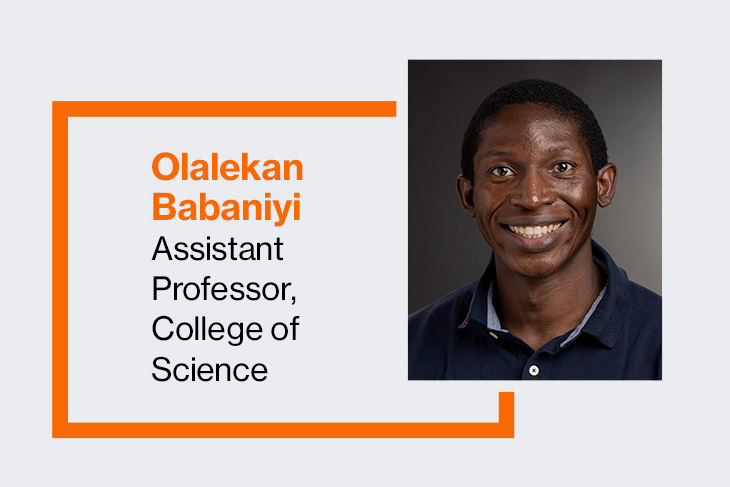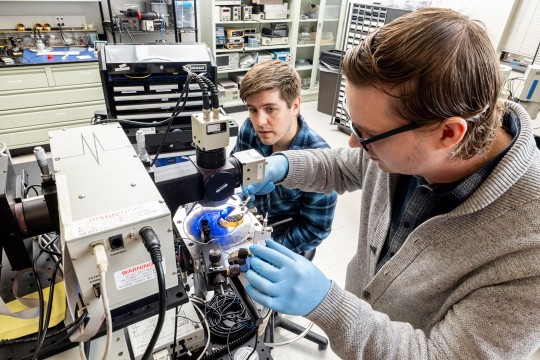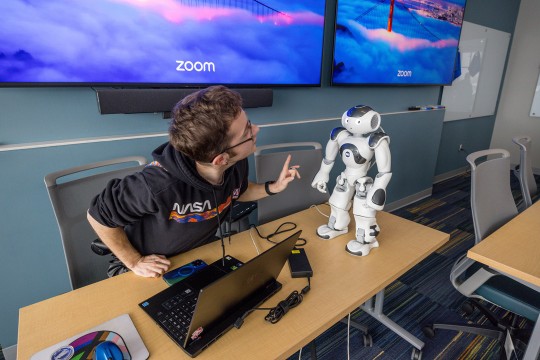RIT researcher developing new mathematical techniques to speed up biomechanical imaging
Olalekan Babaniyi earns Launching Early-Career Academic Pathways in the Mathematical and Physical Sciences grant
A researcher in Rochester Institute of Technology’s School of Mathematical Sciences is developing new mathematical techniques that could lead to improvements in applications ranging from medical imaging to predicting how fast ice flows into the ocean. Assistant Professor Olalekan Babaniyi received a two-year, $250,000 Launching Early-Career Academic Pathways in the Mathematical and Physical Sciences (LEAPS-MPS) grant from the National Science Foundation to develop more efficient techniques for solving inverse problems.
Inverse problems are used to make predictions and decisions about physical systems that are difficult to measure from observable data. However, they can take a lot of computing time and power to solve. Babaniyi said that by developing ways to solve inverse problems efficiently, it can open the doors to important new applications where speed is critical.
“This can be helpful in medical imaging when you’re trying to figure out how stiff or soft tissue is,” said Babaniyi. “This can help non-invasively diagnose different types of diseases that cause tissue to stiffen like cancer. You want to be able to get the images of these parameters in real time so the doctor can see the stiffness as they are scanning the patient. It’s not possible with the current methods, but I believe this new approach can do it more efficiently.”
The grant will allow Babaniyi to fund two mathematical modeling Ph.D. students to help with the project and develop new courses at RIT to cover various aspects of solving inverse problems. Babaniyi said he will make an extra effort to involve students from underrepresented groups and teach them techniques to solve inverse problems and work with data.
“In a world of data, the ability to draw inferences and learn more about the underlying conditions being observed has become increasingly critical,” said Joshua Faber, head of the School of Mathematical Sciences. “Dr. Babaniyi’s work will be an important step in taking problems that currently require a great deal of time and computation and coming up with efficient ways to solve them, with important real-world consequences. His work is exemplary of that of many in the School of Mathematical Sciences, in applying mathematical insights and computational skill to problems that have broad impact both in the scientific community but also the world around us.”
Babaniyi is the second faculty member from the School of Mathematical Sciences to receive an NSF LEAPS-MPS grant this year. Tony Wong, assistant professor in the School of Mathematical Sciences, was recently awarded a $180,000 LEAPS-MPS grant to perform computational modeling research to improve the understanding of uncertainties surrounding future coastal risks. The two-year project will relate uncertain geophysical and socioeconomic factors to flood damages and emphasizes the participation of underrepresented students in mathematical science.
The LEAPS-MPS program supports the research of pre-tenure faculty in mathematical and physical sciences at institutions that traditionally do not receive significant NSF funding, such as minority-serving institutions, predominantly undergraduate institutions, and R2 universities.
For more information, go to the NSF website.








